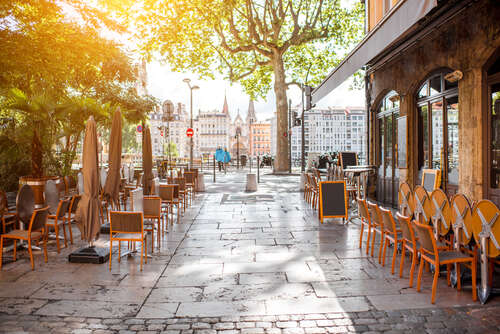
France, a nation that has had an indelible influence on world history, art, fashion, culture and cuisine, boasts vast and varied landscapes and a tapestry of cities that have played pivotal roles in shaping its narrative, but where are the largest of these?

City Monitor delves into the histories and unique characteristics of France’s eight largest cities, as defined by the built-up areas of the Demographia World Urban Areas report.
1. Paris: population 11.108 million
The City of Lights needs little introduction as the largest city in France. As the capital of France and a global centre of art, fashion and culture, Paris is home to numerous iconic landmarks such as the Eiffel Tower, Louvre Museum, and Notre Dame Cathedral.
Once a Roman city called Lutetia, Paris played a central role in the French Revolution and has since become synonymous with avant-garde art movements, haute couture and exquisite French cuisine.
2. Lyon: population 1.424 million
Lyon, often referred to as the culinary capital of France, is situated at the confluence of the Rhône and Saône rivers. Once a major centre of silk production, it has a rich history visible in its Renaissance architecture, especially in the old town (“Vieux Lyon”). It’s also known for its traboules, the unique covered passageways. Additionally, Lyon is a hub of technology and banking in modern times.
3. Marseille: population 1.406 million
Marseille, France’s primary Mediterranean port, has a history that stretches back over 2,600 years. Founded by the Greeks, it’s a melting pot of cultures and is renowned for its vibrant markets, ancient forts and the iconic Notre-Dame de la Garde basilica. The Old Port (Vieux-Port) is a lively waterfront filled with fishing boats, yachts and seafood bistros.
4. Lille: population 1.315 million
Lille, located near the Belgian border, is a city shaped by Flemish, Burgundian and Spanish influences. Known for its lively arts scene and market squares, Lille was once an industrial centre, particularly in textiles. The Grand Place and the Lille Palace of Fine Arts are two of its standout attractions.
5. Toulouse: population 946,000
The “Pink City” of Toulouse owes its nickname to the terra-cotta bricks used in many of its buildings. Situated near the Pyrenees in the south of France, Toulouse is a hub of the aerospace industry with the headquarters of Airbus located here. It also boasts an illustrious history linked to the Cathars and the Albigensian Crusade.
6. Nice: population 871,000
Nestled on the French Riviera, Nice is famed for its sunny weather, the azure waters of the Mediterranean, and the Promenade des Anglais. Once an area of strategic importance for the Greeks and Romans, today Nice attracts tourists with its blend of sea, art museums like the Marc Chagall National Museum, and its annual Carnival.
7. Bordeaux: population 827,000
Synonymous with wine, Bordeaux, in the south-west of France, is more than just a wine lover’s paradise. Its 18th-century architecture, exemplified by the Palais Rohan, gives it an unparalleled old-world charm. The Cité du Vin, a contemporary wine museum, encapsulates Bordeaux’s profound viniculture heritage.
8. Nantes: population 578,000
Once the capital of the Duchy of Brittany, Nantes is a city with a maritime spirit. The Château des Ducs de Bretagne and the Machines of the Isle of Nantes, a steampunk amusement park, perfectly capture the city’s blend of history and innovation. It also played a significant role in the French slave trade, a history acknowledged and remembered through various city monuments.
From Roman-era relics to groundbreaking contemporary industries, the largest cities in France offer a glimpse into the country’s rich past while continually evolving to shape its future.
[Read more: Where are the largest cities in Germany?]






